Visit Quito: what are the best things to do and see in the capital of Ecuador?
Known all over the world to be almost located on the latitude 0 , Quito , the Ecuadorian capital, surprises with its majestic architectural buildings dating from the 16th century, which give the city its distinctive colonial air . Walking through the narrow paved and steep streets of the historic centre, you can travel through the history of the country whose name is retained by the parallel that bears its name and divides the world into two hemispheres: north and south.
In September 1978, the historic centre, or La Ciudad Vieja (the old town) of Quito, was declared by UNESCO First World Heritage Site . With 3.2 km2, it is the largest historical centre and considered the best preserved in America. The old centre has squares, more than 20 churches, monasteries and convents, museums, and buildings whose traditional balconies are decorated with flowerpots with elegance.
By walking around the city, you will be able to discover the daily lives of the inhabitants of the Ecuadorian capital. The colonial landscape, with preserved architecture, is confused with the hustle and bustle of a large city: men in squeezed costumes mix with the elderly walking slowly, and dressed in colourful fabrics. Quito counts about 1.6 million inhabitants, and if you plan to visit the city for a few days, here are the best things to do in Quito .
1. La Plaza de la Independencia
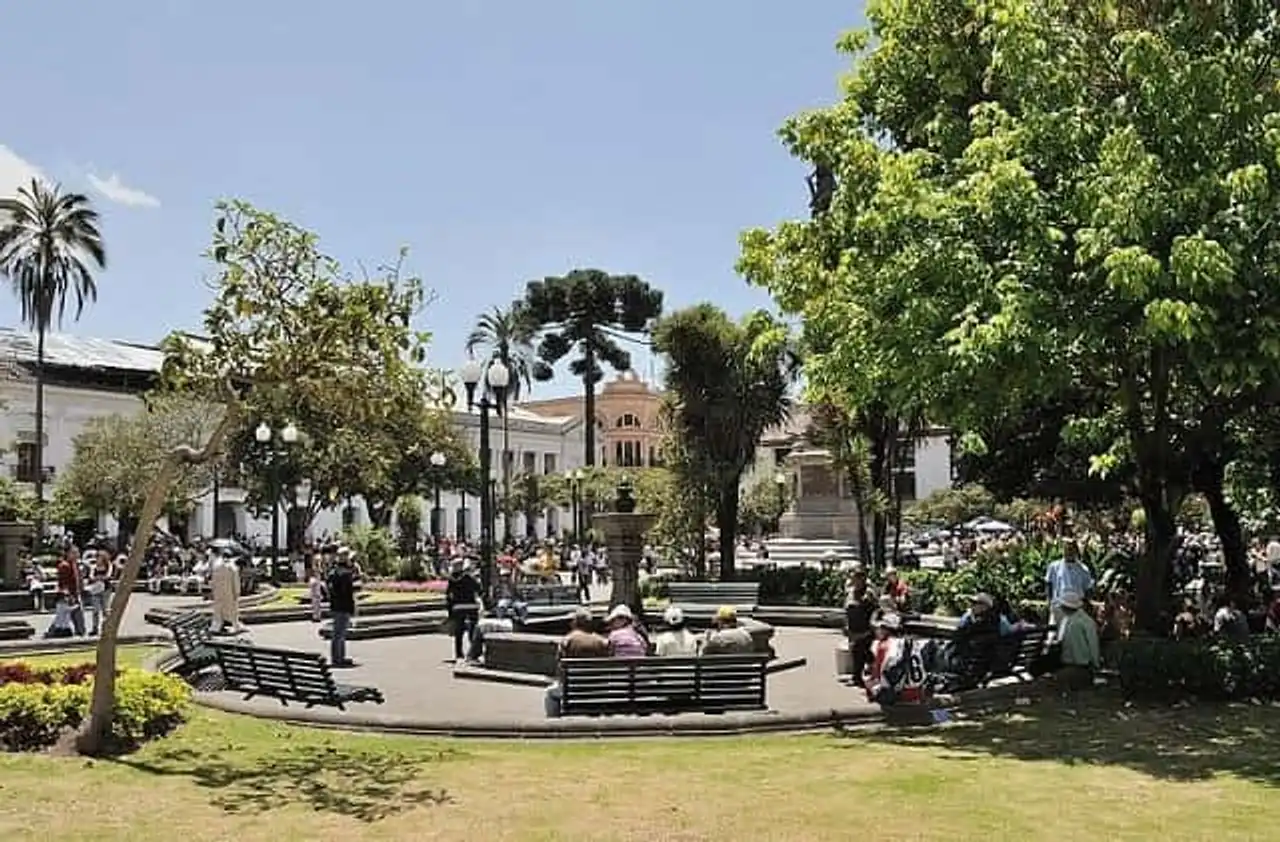
Wikimedia - Cayambe
It is in the heart of the city, on the Plaza de la Independencia (also called Plaza Grande) that is located Palacio de Carondelet the seat of the government of Ecuador. In addition to sheltering the center of the country’s power, the place is surrounded by three other important organs: the Metropolitan Cathedral , Archbishop’s Palace and Palais Municipal . In the center of the square is the Independence Monument , built in 1909, in tribute to the first uprising of the country’s independence war 100 years earlier. The structure consists of a wounded lion (soulding the defeat of the Spanish troops), a condor (emblematic bird of the Andean countries), and the Roman goddess Libertas (who represents freedom). It is an ideal central point to begin your visit to the old city.
2. San Francisco Square and Church
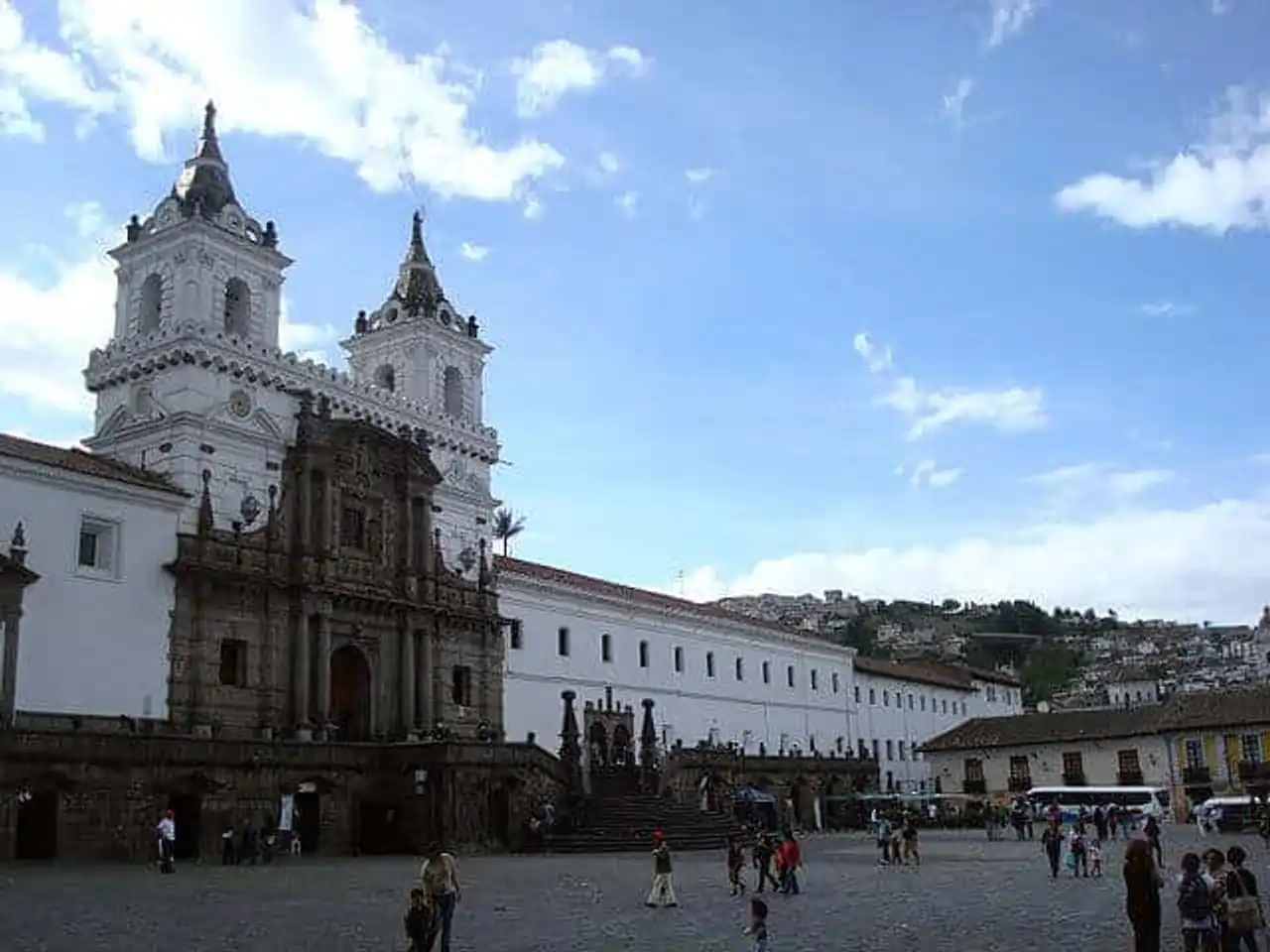
Wikimedia – DianGabi
On one of the largest squares in Quito, is one of the largest, most beautiful and oldest churches in the city: San Francisco . Its construction began in 1535 with that of the monastery of the same name, and it took 70 years to be completed. With its symmetrical façade and its carved entrance into the stone, the baroque-style church has a magnificent altar on which the icon of the city stands, that of the Virgen Alada de Quito (the winged virgin of Quito), carved by Bernardo de Legarda in 1734.
3. Iglesia de la Compañía de Jesús (Eglise de la Compagnie)
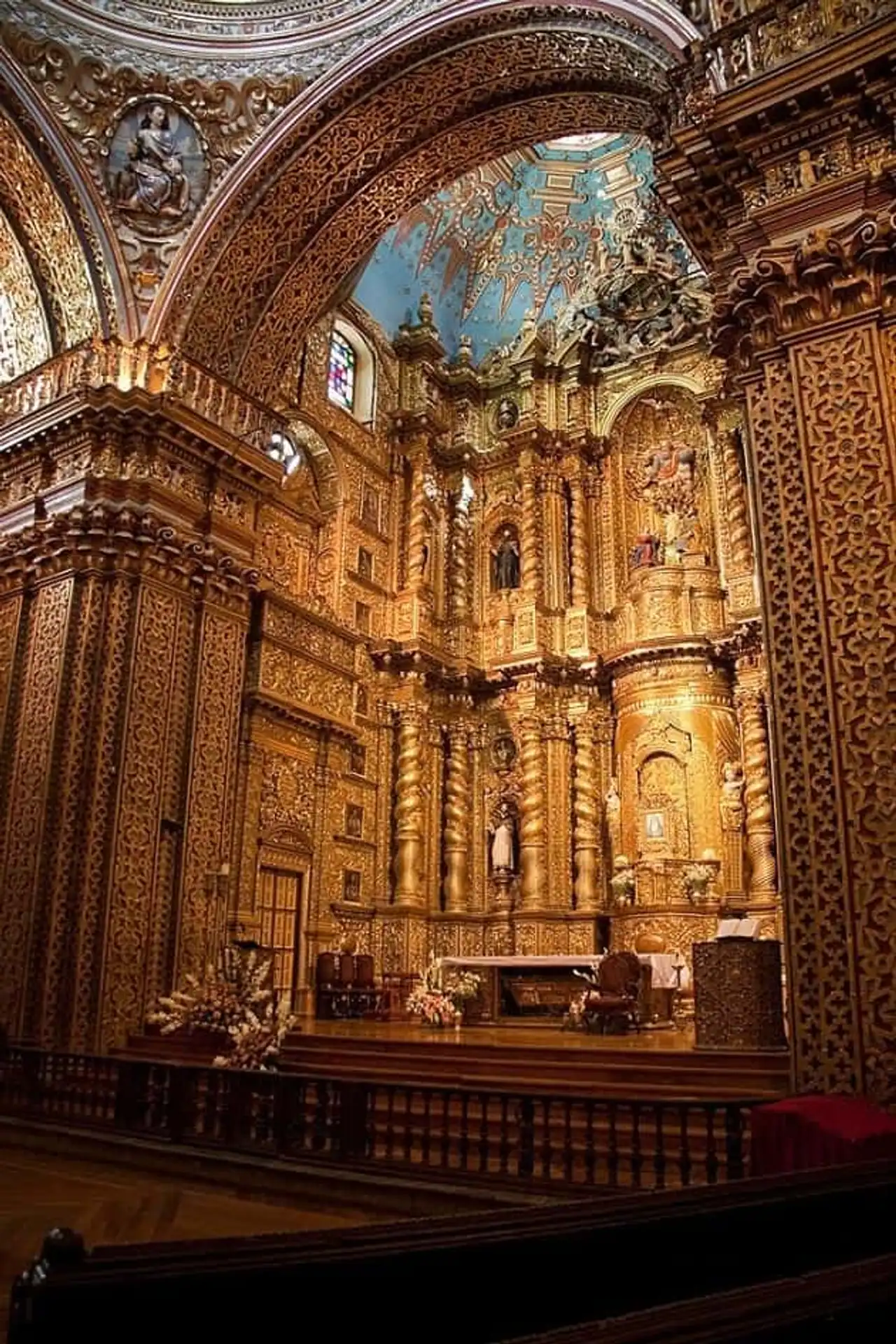
Wikimedia – Maros M r a z (Maros)
This impressive Jesuit church from the 16th century, located at one of the ends of San Francisco Square, took 163 years to be finished and it is the most beautifully decorated of all the churches of the country. Seriously damaged by the earthquake 1987, it was restored in 2002. Richly complex both inside and outside, it is a masterpiece of Baroque art and Quiteño Colonial art: its altars are covered with gold leaves and the altars are covered with gold leaves. paintings on its vaulted ceiling earned him the nickname of "Chapter Sixtine de Quito". The walls are covered with murals from Quito School. The motifs on the columns inside the church clearly show a Moorish influence, and they are said to be copies of those made by the Bernin in the Vatican. They are reproduced on the main altar.
4. La Mitad del Mundo (Moitié du Monde)
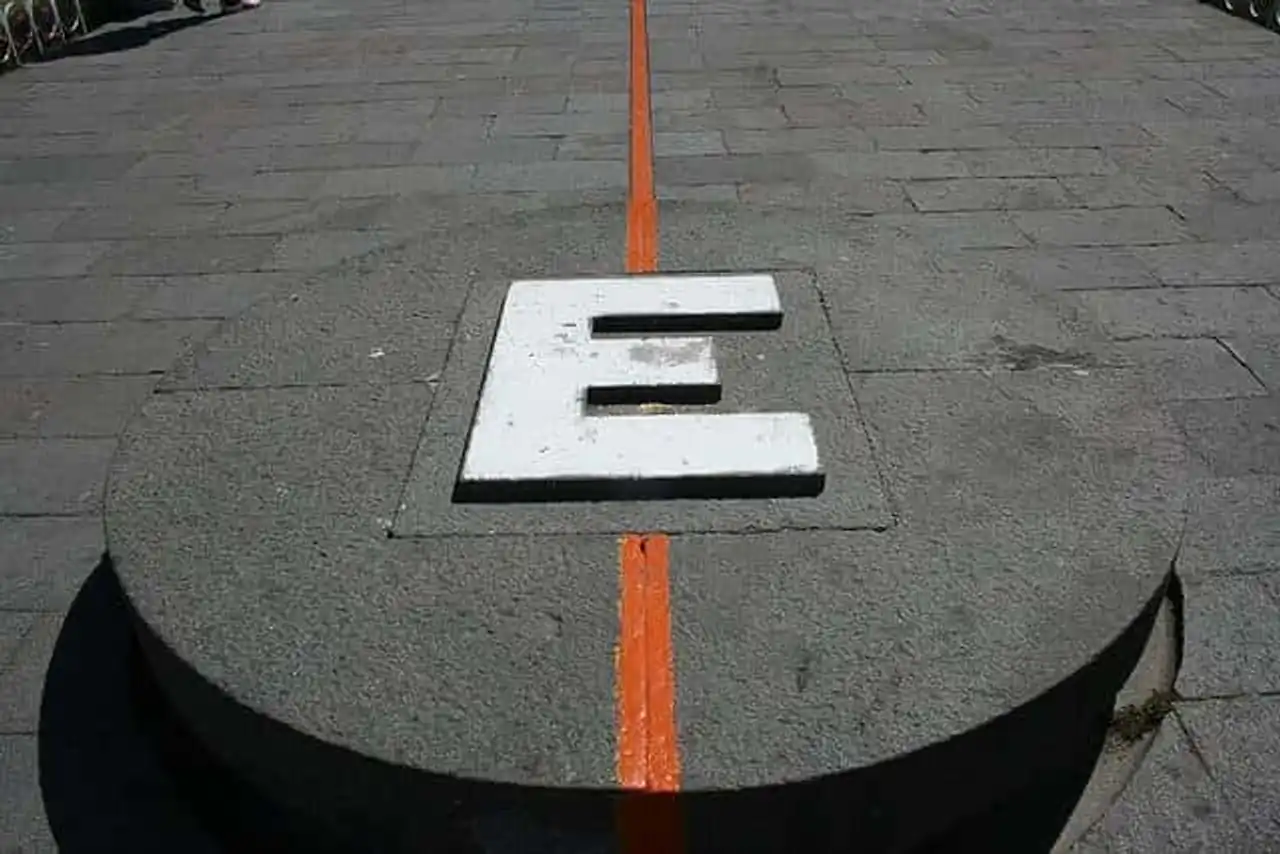
Flickr – Gary Hans
Mitad del Mundo is of course very touristy, but it’s fun to say that you have both a foot in the northern hemisphere and a foot in the southern hemisphere. This monument is located about 22 kilometers north of Quito , exactly on the imaginary line of the equator, which separates the globe in two. As you can expect, there is a false colonial village with many shops and restaurants. Not necessarily great, but it’s fun to wonder how water flows into the sink in this place (in all directions). Do not hesitate to take a look at the Inti Nan Museum which is 240 metres from there, supposedly at the “exact” location of the equator line.
5. Basílica del Voto Nacional (Basilique du Vœu national)
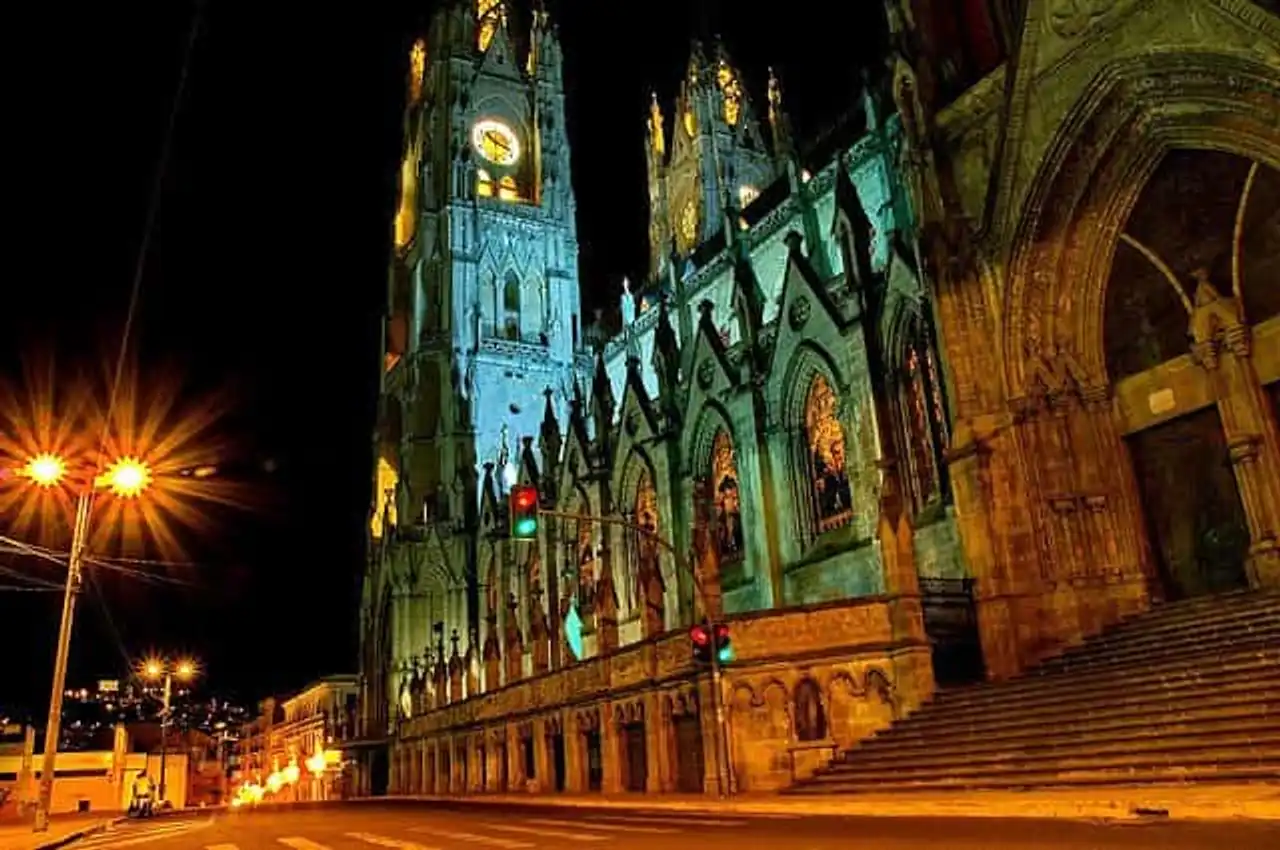
Flickr – Rinaldo Wurglitsch
From many corners of the city it is possible to see the Basílica del Voto Nacional . With its majestic Gothic-style building, inspired by the French cathedral of Bourges, it is the largest in its kind in Latin America. It is probably also one of the most beautiful churches in the city. From the outside, the gargoyles , these sculptures that are used to evacuate rainwater, are specially decorated with figures of Ecuadorian wildlife such as turtles, iguanas, tattoos, cougars and dolphins. Inside, many stained glass windows represent the country’s flora and recall scenes of Jesus’ life. One of the advantages that the basilica presents is that one can climb to the top of one of its towers to get one panoramic view at 117 meters high . The price for this is about 2,50€.
The construction of the Basilica del Voto Nacional began in 1883 and was completed only in 1924. Pope John Paul II visited the site on January 30, 1985, which earned him a statue in his honour that was installed today in front of the main entrance of the church.
6. The hill of El Panecillo and the Virgin of Quito
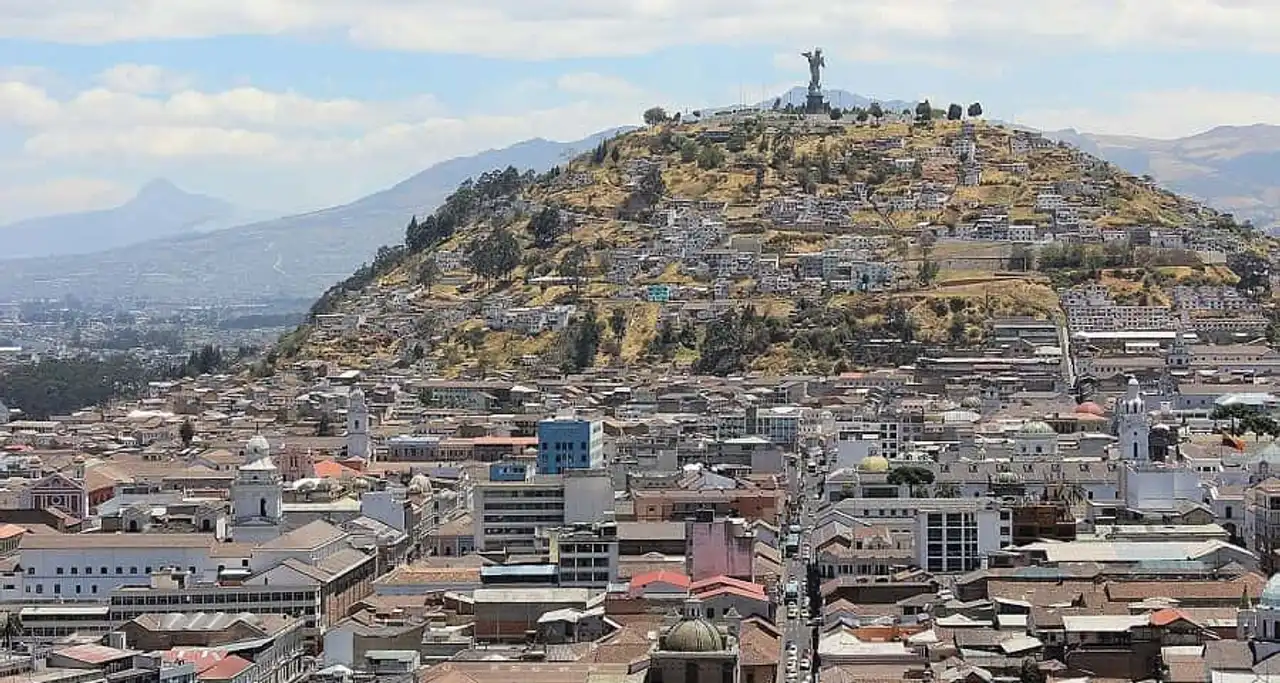
Pixabay - 472619
Dividing the center and the south of Quito, the Panecillo hill ("bread" in Spanish) offers one of the main points of view of the city. Its height of 3035 meters above sea level allows it to be visible from all over the capital. The name Panecillo was given by the Spanish in the early 16th century. Before that, the hill had already received two other names: Yavirac (meaning “water source”) at pre-inca times and Shungoloma , as the Incas called it.
It is on this hill that the sculpture of the Virgin of Quito , equipped with wings, and designed by Spanish artist Agustín de la Herrán Matorras. measuring 41 meters high (with the base), it is composed of more than 7,000 pieces of aluminium, and was built between November 4, 1955 and March 28, 1975, the day of its inauguration. This is the replica of Bernardo de Legarda’s virgin in the church of San Francisco.
7. Teleférico Cruz Loma
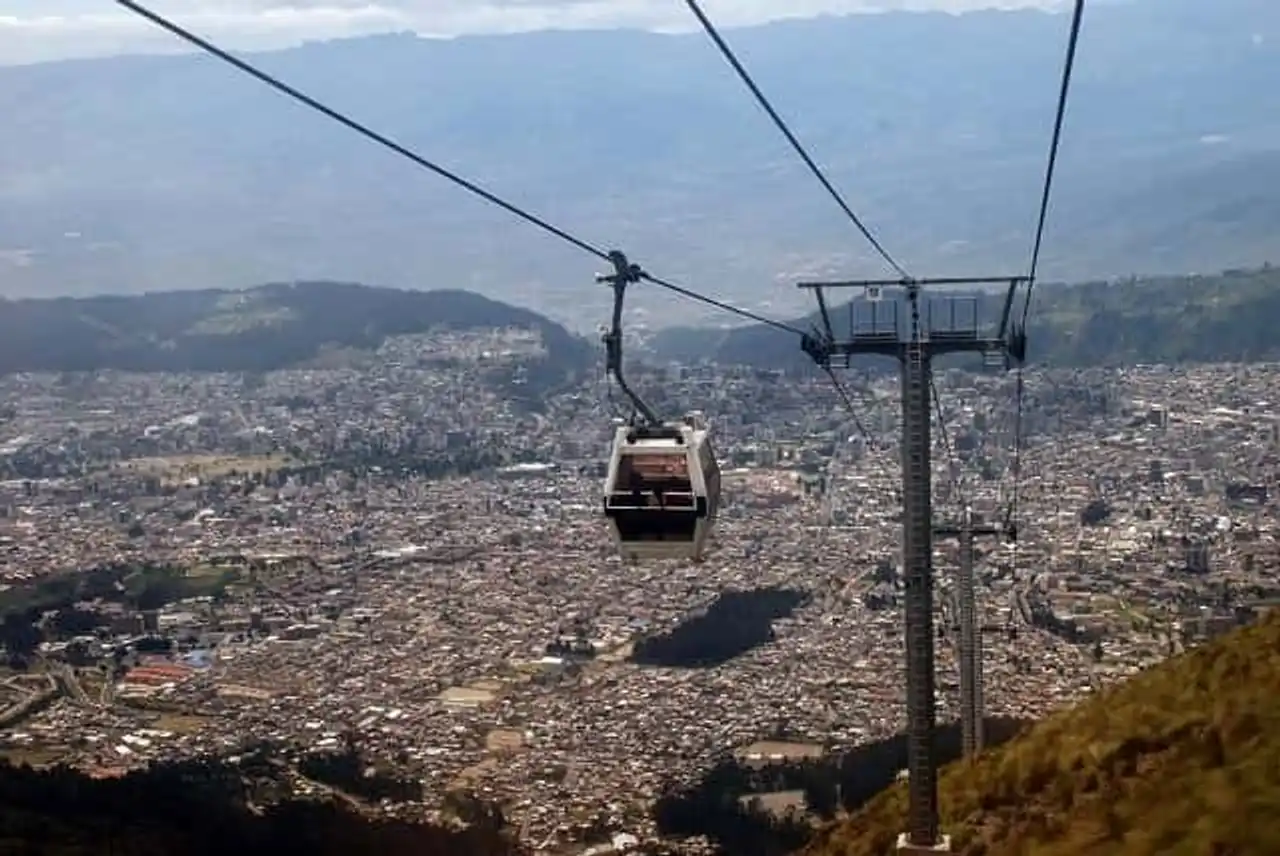
Credit – selectlatinamerica.co.uk
The Quito cable car (which is called the “TelferiQo”) allows you to fully appreciate the landscape that surrounds this city in the middle of the Andes, by transporting you to 4053 meters above sea level, on the sides of the Pichincha volcano . After 15 minutes of climbing, you can also have an overview of the Cotopaxi volcanoes (5897 m), Antisana (5704 m) and Cayambe (5790 m), which are among the four largest volcanoes in the country, only surpassed by the Chimborazo (6267 m). Little trick: leave the bottom of the cable car at the end of the afternoon to watch the sunset. Don’t forget to clothe yourself as you need, the wind and the cold being present up there. The ticket for the cable car is at a rate of about 7€.
8. The Museo Guayasamín and the Capilla del Hombre
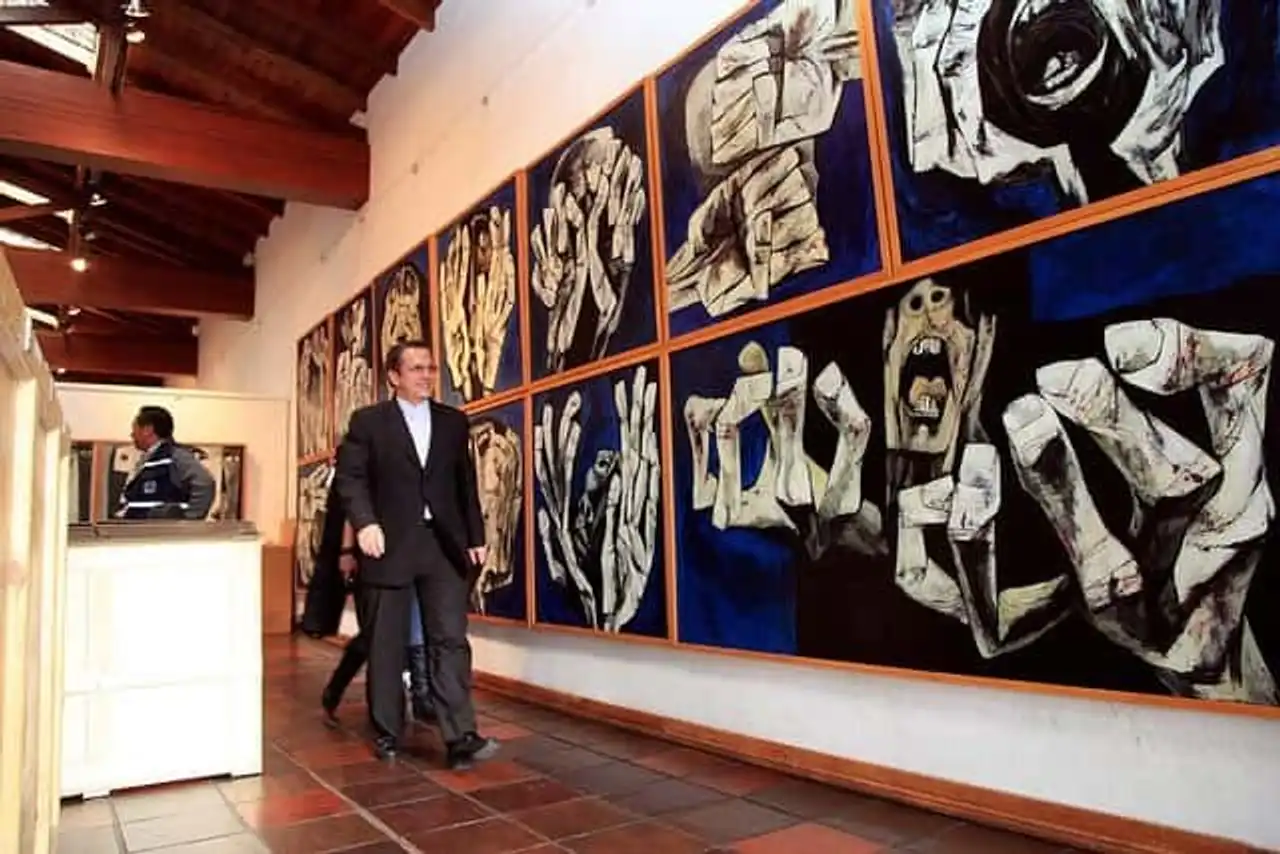
Flickr – Cancillería del Ecuador
In the old house of the world renowned painter Oswaldo Guayasamin (1919-1999), this wonderful museum houses the most complete collection of his work. Guayasamin was also a passionate collector, and the museum presents its exceptional collection of more than 4500 ceramics, bones and pieces of metal from the pre-Columbian era recovered through Ecuador. The pieces are classified by theme (vases, fertility figures, funeral masks, etc...), rather than by time or cultural group, and the result is none other than one of the most admirably presented archaeological collections in the country.
It is strongly suggested to visit this museum, especially that is located right next to the Capilla del Hombre , always of the same artist, which is an art museum specially built to be dedicated to the peoples of Latin America.
9. Other ideas of visits to Quito
If you stay in Quito for a long time, you may need additional ideas to discover the city and its surroundings. Quito is a good anchor for visiting the whole country.
- Take up Calle Juan de Dios Morales, dite La Ronda, which is the most romantic part of the “Colonial Quito”
- The Teatro Bolívar recently restored, which hosts shows
- The botanical garden and its orchidarium (2000 orchids) located in the Parque La Carolina
- Of course, taste local specialties and experience nightlife
- The marketOtavaloone of the most famous Latin American markets, located 110 km north of Quito (2h by bus)
- To do if you are sporty and have time: a hike on Cotopaxi volcano
Quito: How to get there? Where to sleep?
Small weather and climate info : Located on the equator and 2800 metres above sea level, Quito generally has a variable climate throughout the day. With fresh mornings and nights, the average temperature in the city is 17°C. Between June and September, the days tend to be warmer, with a maximum of 23°C to 25°C.
Several companies operate flights to Quito from France and Europe. This is the case especially for the German company Condor from CDG. To find the cheapest (or least long) flight to Quito on your dates of stay, don’t hesitate to use the flight comparison Skyscanner .
Lour lodging in Quito, several neighbourhoods offer to you: from the centre of La Carolina to the very trendy La Floresta, the capital hosts what to satisfy any traveler soul. Hostels, hotels or apartments... Find the ground foot of your dreams at the best price in Quito by searching for this Compare hotels .
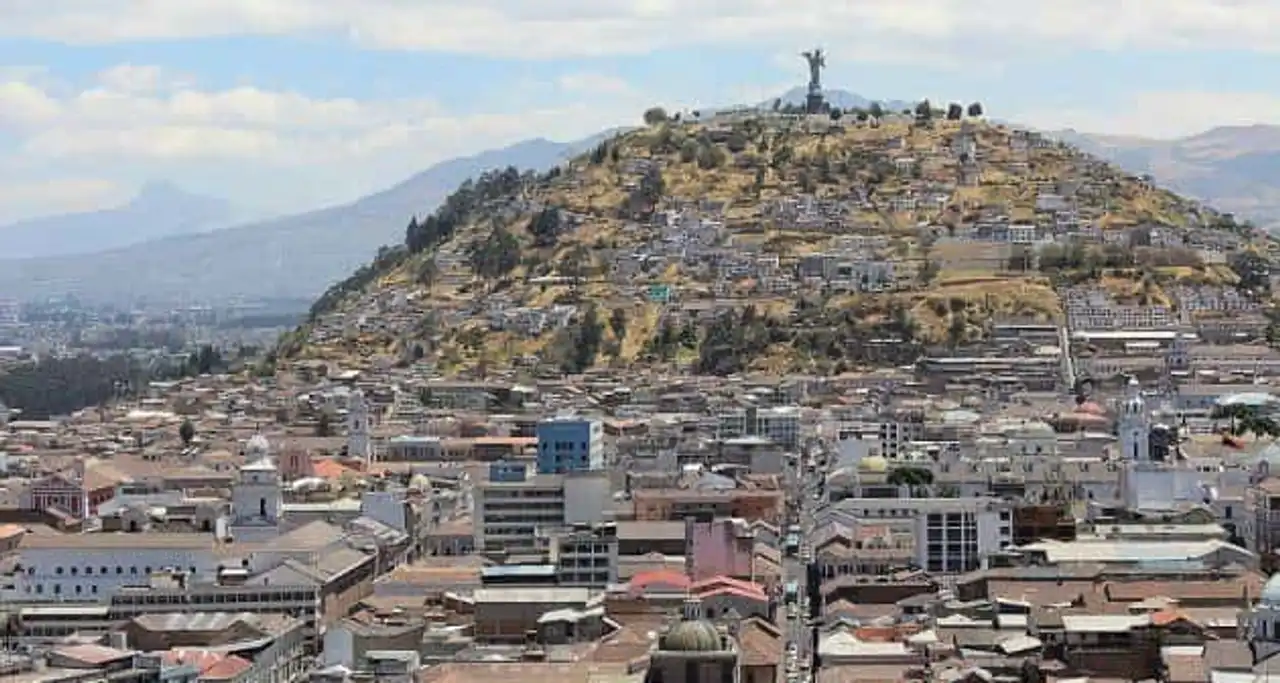




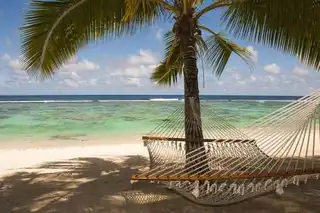

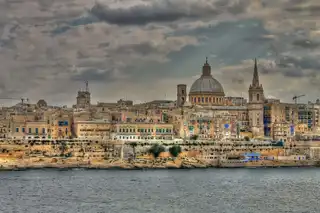
Loading comments ...